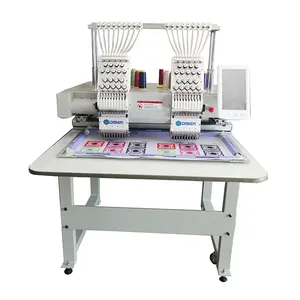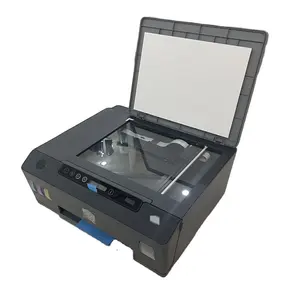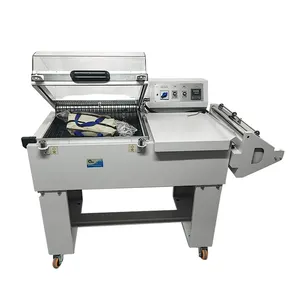Popular in your industry


























































Related Searches:





























































































































Top categories
About motor coil lacing machine
The motor coil lacing machine stands as an essential pillar in the fabrication of electric motors, providing the critical support needed to ensure the stability and efficacy of motor coils. Its role in the manufacturing sequence is irreplaceable, delivering the exactitude and efficiency vital for the construction of superior motors.
Types and Characteristics of Motor Coil Lacing Machines
Exploring the variety of motor coil lacing machines, one encounters a spectrum of models designed to meet diverse manufacturing requirements. Fully automatic variants are the stalwarts of high-volume production, engineered for relentless operation with scant human oversight. These machines boast rapid lacing speeds and are commonly integrated into assembly lines for bulk manufacturing. Semi-automatic versions provide operators with greater control, making them ideal for limited production batches or bespoke motor designs. Machines tailored for specific needs are also on offer, capable of handling unique motor dimensions or atypical coil arrangements. Such machines may feature adaptable lacing heads or programmable lacing sequences, offering the versatility necessary for custom motor fabrication.
Structure and Operation of Motor Coil Lacing Machines
The motor coil lacing machine comprises several key components, each crucial to its function. The framework offers a solid foundation for the apparatus, often fitted with mechanisms to dampen vibrations and enhance precision. At the core of the machine, the lacing unit performs the delicate task of threading and fastening the coil wires. This unit is an assembly of spindles, guides, and needles that operate in harmony to execute the lacing with meticulous precision. The control panel, typically featuring a user-friendly interface, enables the setting of various parameters, such as lacing tension, pace, and pattern. More sophisticated models may incorporate sensors and visual systems to oversee the lacing activity and identify any irregularities, thus mitigating the likelihood of defects.
Materials and Properties
The selection of materials for the construction of a motor coil lacing machine is deliberate. Steel, celebrated for its robust tensile strength and endurance, is the cornerstone of the machine's structure, guaranteeing its ability to endure the demands of an industrial environment. Stainless steel is preferred for components in contact with lacing materials to avert contamination and to withstand the corrosive impact of any solvents or coolants employed in motor production. The attributes of these materials, such as thermal constancy and resistance to abrasion, are pivotal in preserving the machine's precision throughout extended use.
Business Usages and Applications
In the commercial sphere, the motor coil lacing machine finds a wide array of applications. Within the automotive sector, it is indispensable for crafting motors that activate devices from windows to windshield wipers. In the HVAC realm, it is utilized to construct fan motors that are both dependable and silent. The machine's precision also renders it apt for motor production in medical apparatus, where dependability is of the utmost importance. The capacity to fabricate motors with high efficiency and minimal noise is especially prized in the consumer electronics field, where the machine's contribution to the compact and robust design of motors can offer a distinct market edge.
Functions and Tasks
The primary role of the motor coil lacing machine is to bind the windings of motor coils with a lacing cord, a process critical to the motor's functionality and durability. The machine executes a sequence of operations, including the insertion of the lacing material through the coils, its secure knotting, and the trimming of any surplus. This procedure not only fortifies the motor's structure but also facilitates heat dispersion and diminishes vibration, potentially prolonging the motor's lifespan.
Features and Unique Selling Points
Notable for their precision engineering and sophisticated control mechanisms, these machines often come equipped with adjustable settings for various lacing patterns, catering to an assortment of motor configurations. Certain models boast dual lacing modes, allowing seamless transitions between lacing styles. The incorporation of automated thread tensioning systems guarantees uniform lacing tightness, a factor crucial for motor efficiency and noise reduction. These characteristics, coupled with the machine's sturdy build and dependability, constitute the unique selling propositions that set it apart in the marketplace.
Benefits and Improvements
Employing a motor coil lacing machine leads to marked enhancements in motor manufacturing. The meticulous lacing augments motor quality, curtailing the likelihood of coil displacement that can cause insulation degradation and eventual motor failure. The mechanization of the lacing process escalates production velocity, enabling producers to satisfy increased demand without compromising on quality. Moreover, the consistency afforded by the machine diminishes the necessity for rework and waste, contributing to a more eco-friendly manufacturing approach.
How to Choose the Right Motor Coil Lacing Machine?
Selecting the appropriate motor coil lacing machine necessitates a comprehensive evaluation of your production requisites. Considerations such as motor size, anticipated production volume, and the space available in your facility will guide your decision. It is also crucial to assess the machine's compatibility with current production lines and its potential for integration into automated systems. The caliber of components, including the motor and PLC, should be meticulously examined, as they are integral to the machine's performance and reliability. The scope of after-sales service is another significant factor, as it can greatly influence the machine's operational uptime and productivity.
How to Maintain Your Motor Coil Lacing Machine?
Proper maintenance is vital for the sustained performance and reliability of a motor coil lacing machine. A routine maintenance regimen should encompass cleaning to prevent debris accumulation, lubrication of moving parts to minimize wear, and inspection of electrical components to avert failures. Maintaining a log of maintenance activities and training personnel in the correct operation of the machine are advisable to avoid misuse, which could lead to early deterioration or damage.
What After-Sales Services Can You Expect?
Upon acquiring a motor coil lacing machine, a comprehensive suite of after-sales services can be expected. These services are crafted to ensure smooth machine operation and may encompass preventative maintenance plans, parts replacement, and technical assistance. The presence of local service technicians can be invaluable, offering prompt and effective solutions to any operational challenges that arise. Verifying the availability of these services in your vicinity is essential for maintaining the efficiency of your equipment.
Armed with an enriched understanding of the motor coil lacing machine, its variants, structure, materials, commercial uses, functions, features, advantages, and upkeep, businesses on Alibaba.com can make informed decisions that resonate with their production objectives and strategic ambitions.































